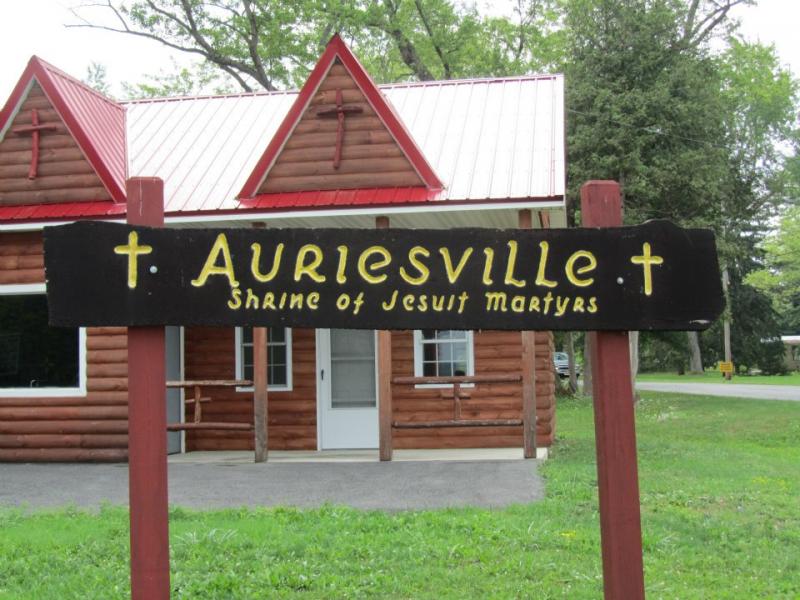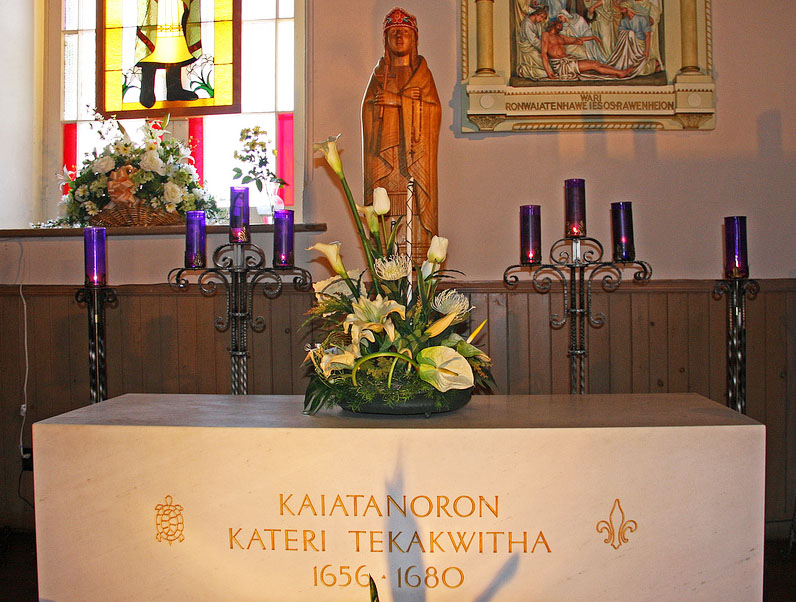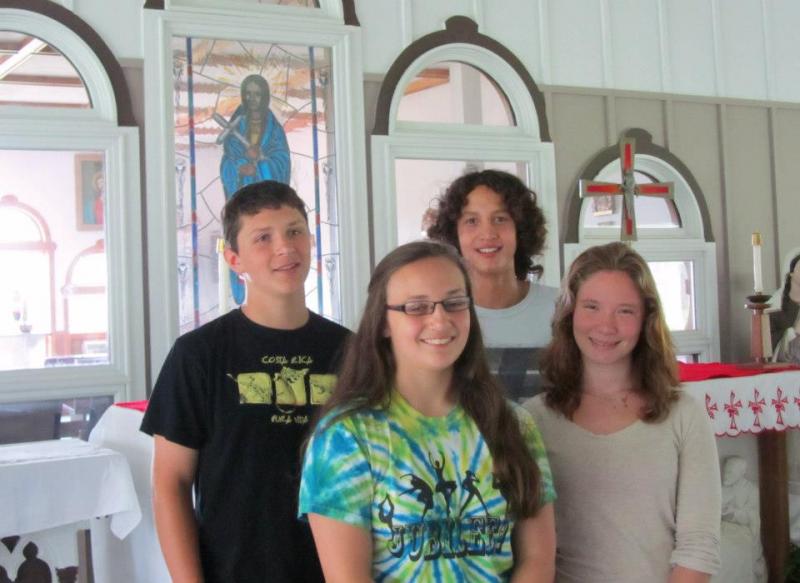The Palm Branch and the Lily
By Hannah Carter
A young Filipino martyred in Guam in 1672 when he was maybe 17, Blessed Pedro Calungsod, who is shown in portraits holding the palm of martyrs, and a young woman of Mohawk-Algonquin parentage born in 1656 in what is now New York State, Blessed Kateri Tekakwitha, known as the Lily of the Mohawks, who died in 1680 in what was then New France, now part of Canada, will be canonized together by Pope Benedict XVI on 21 October. The author, an American with close family ties to the Philippines, sees the connections between their lives and with that of her teenage son.
We have great cause for joy in the canonization of the teenage martyr Blessed Pedro Calungsod on 21 October. His devotion, courage and zeal to share his faith as a catechist are a shining and attractive example for all of us. St Pedro’s youth makes his story all the more poignant. Our teens are blessed to have such a model as they strive to live the Catholic Faith in a secular world, often hostile to the message of the gospel. I am the mother of an older adolescent and I have witnessed my son’s struggles, surrounded by these negative influences. It is hard to be a young person in today’s world, although the grace of Our Lord always suffices.
Young Pedro Calungsod studied with the Jesuits in the mid 1600s, during years when the Society of Jesus was expanding its missionary activity throughout the world ‘to the greater glory of God’. It was just over 100 years since the foundation of the Society, and its singular purpose drove many of the members to heroic virtue and even martyrdom. The lay persons associated with their mission often shared the same life and death in far-flung outposts. So it was that Pedro Calungsod accepted the invitation to accompany the Superior of the Jesuit mission to Guam and the other Mariana Islands, Blessed Diego Luis de San Vitores. Pedro may have been only 12-15 years old when he left his native Visayas to travel as a missionary to the Chamorro people. As a mother, I wonder about things like his parents' reaction to this dramatic departure. I wonder if Pedro shed tears of homesickness into his pillow during the voyage.

This week I knelt on holy ground. I visited the National Shrine of the North American Martyrs in Auriesville, New York, where three French Jesuit missionaries were martyred between 1642 and 1646. This sacred place is called America's reliquary because the remains of one martyr were buried in the now silent ravine, and the other two battered and precious bodies thrown into the nearby Hudson River. Auriesville is surely one of the ‘thin places’, as some describe points of contact between heaven and earth. The parallels between the sacrifice of St Pedro, that of Blessed Diego and these martyrs are powerful. They lived in the same time period, though on opposite sides of the world. Both groups served selflessly in the Company of Jesus.

We have repeatedly heard the words of Tertullian (c.160 – c.225), ‘The blood of martyrs is the seed of the Church’. After the martyrdom of St Pedro and his superior, Blessed Diego, the Chamorro people of Guam and the Marianas became firmly Catholic and have remained so to this day. At Auriesville, St Kateri Tekakwitha, a Native American of the Mohawk tribe, was born ten years after the martyrs' deaths in her own community and just a year after St Pedro Calungsod’s birth. Kateri reached an amazing height of sanctity in a very short period, baptized at 20 and dying at 24. She will be canonized at the same ceremony as Pedro Calungsod this October.
It is a deep joy for me to celebrate these two heavenly friends raised to the honors of the altar on the same day. I have prayed at the spot of St Pedro’s martyrdom in Tumon, Guam, and been immersed in the warm crystal-blue waters of Tumon Bay where his sacred relics were cast after his martyrdom. I have prayed many times, most recently last week, at the tomb of St Kateri in Canada. Her beautifully simple marble sarcophagus reads ‘Precious Kateri Tekakwitha’ in Mohawk. Pedro and Kateri, canonized together . . . the palm branch and the lily. Beyond coincidence, this gift of God is ‘hulog sang langit’.
I reflected at greater length on these connections and their meaning. These two children of divine predilection were born within a year of each other in the long-ago 17th century. Both would grow to be courageous and holy young people, answering a wholehearted ‘yes’ to the call of God. They would be linked to and deeply influenced by the missionary outreach of the Society of Jesus. Finally, after lives of heroic virtue, they will share the honors of the altar on 21 October. St Pedro and St Kateri are tied to specific and dramatic historical moments which remove them from our daily experience, but their Christian witness endures for our inspiration and imitation.
St Pedro died at the side of Blessed Diego whom he refused to leave when they were attacked for baptizing the daughter of a hostile chief. St Pedro’s devotion in offering his ultimate gift in reverence for the priesthood and witnessing to the sacrament of baptism makes us examine our lives: do we pray for the priests who serve us in the name of Jesus? Is baptism a profoundly transforming event in our lives? Do we realize the sacred duty of godparents beyond the purely social aspects? St Pedro and St Kateri lived through daily privation without complaint. They suffered extreme heat and cold, respectively, along with myriad other discomforts. Surely we can endure our small inconveniences more cheerfully in their honor.

Joseph, 2nd from right, with his cousins David and Bethany and their friend Amy
I brought my 16-year-old son Joseph to Auriesville this past week. His dad (Visayan like St Pedro) hails from Ilog, near Kabankalan City, Negros Occidental. Joseph’s middle name is Lorenzo, and he has heard about his patron St Lorenzo Ruiz since early childhood. Now he is learning about the second Filipino saint, Pedro Calungsod. At Auriesville I was able to introduce Joseph to the North American Jesuit martyrs and to Kateri. Joseph is proud of both his Filipino and French-Canadian heritage and as an older teen can appreciate the witness of these saints so close to his own age. At Auriesville I watched him walk the grounds with his teenage cousins. The young people were subdued and reverent, considering the courageous sacrifices poured out on the very soil beneath their feet. The example of St Pedro Calungsod will be equally moving and empowering for our youth once his story is more widely known.
A favorite hymn of the Filipino choir that sings at my parish is the Prayer of St Ignatius, founder of the Society of Jesus, ‘Take and Receive’. Our young saints exemplified the spirit of this prayer so earnestly that we do well to think on the lyrics and echo them in our hearts. Let us pray these words with gratitude for the gift of our new saints:
‘Take and receive, O Lord, my liberty
Take all my will, my mind, my memory
All things I hold and all I own are Thine
Thine was the gift, to Thee I all resign.
Do Thou direct and govern all and sway
Do what Thou wilt, command, and I obey
Only Thy grace, Thy love on me bestow
These make me rich, all else will I forego.’
(Translation and music by Fr Manuel Francisco SJ).